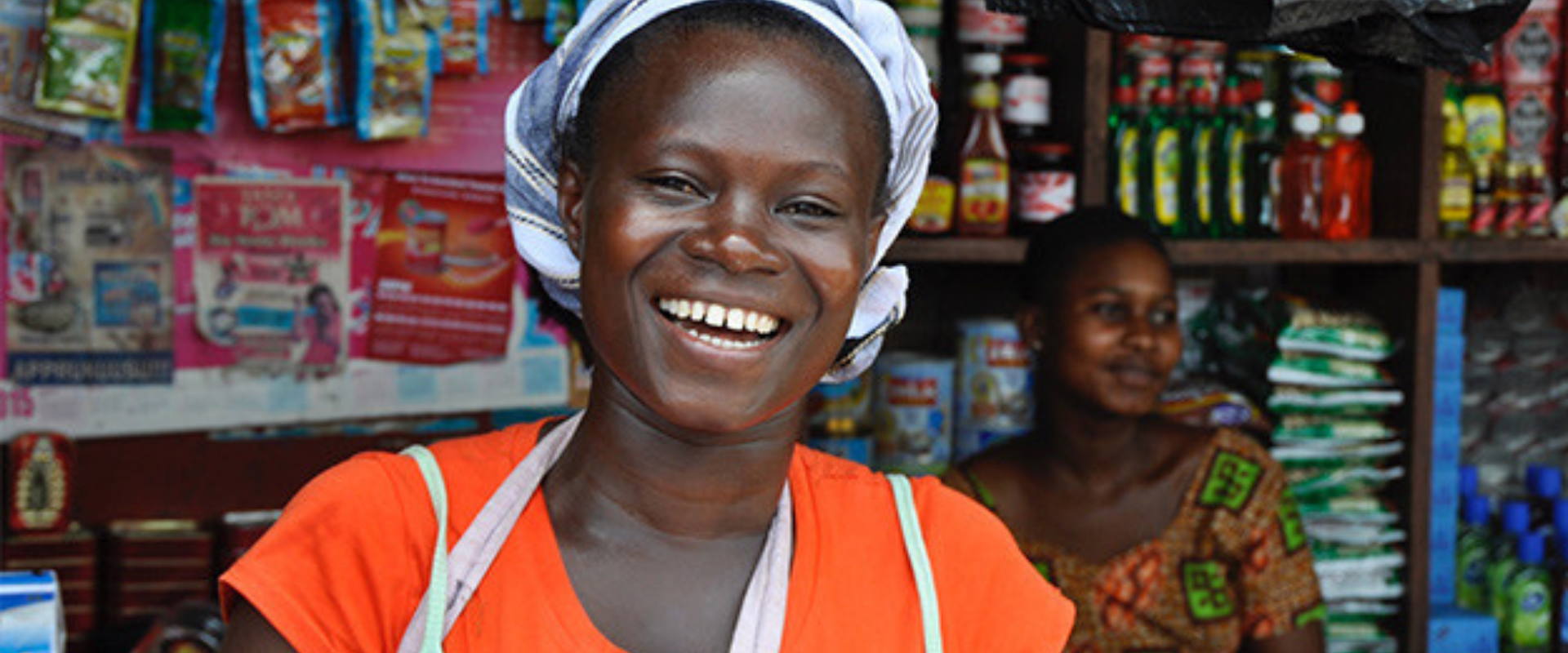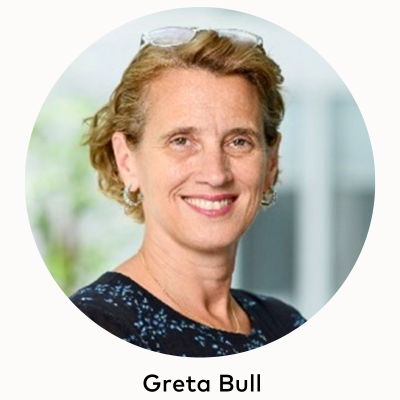Credit where it’s due: How better access to affordable capital for women can unlock growth for all
April 16, 2024 | By Dianna Delling
Visit a country like Uganda, Kenya or Ethiopia and you’re likely to meet a woman running her own small business — selling sun-ripened tomatoes from her garden or colorful cotton textiles painstakingly woven by hand. Africa is home to 26% of the world’s women-owned enterprises, many of which are solo ventures.
These women tend to start micro businesses out of necessity. Formal, well-paying jobs are scarce in these low- and middle-income countries, where the population is expected to double to 2.5 billion by 2050. Yet growing a business is difficult in a region where women have limited access to working capital — and face inferior credit terms when they manage to find it.

In a new white paper, “Women and Equitable Growth in a Resource-Constrained World,” the Bill & Melinda Gates Foundation takes a deep dive into the issues, which also exist in other parts of the world, and presents a vision for building a more diverse, grassroots financial architecture in sub-Saharan Africa. The goal: Find ways to more effectively channel financing to micro and small business owners, particularly women. As Melinda French Gates is expected to discuss Thursday at Mastercard’s annual Global Inclusive Growth Summit, where she is a featured speaker, the issues are complex, and the foundation sees global cooperation as critical in addressing them.
The Mastercard Newsroom recently spoke with the paper’s lead author, Greta Bull, who oversees women’s economic empowerment at the Gates Foundation.
Your paper posits that bringing women into the formal financial sector is an important part of helping their businesses grow and thrive. How so?
Bull: To run a business, micro or small, requires reliable and affordable sources of financing. Unfortunately, most women in Africa don’t have access to this kind of credit. They can access very expensive short-term digital consumer loans if they have a mobile money account, or can access credit through small rotating community credit associations, where funds aren’t reliably available when businesses need them.
But these sources of credit either are expensive or don’t match up with what women need to run an actual business. We see an absence of affordable, tailored credit solutions. The paper is about getting more — and, more importantly, better — credit resources into the hands of women entrepreneurs.
There’s a lack of credit history data in Africa, where digital and mobile banking are predominant. How does that factor into the situation?
Bull: When lenders can’t see a flow of transaction data or a repayment history, they are effectively flying blind in understanding the credit risk represented by that customer. Informal groups handle this by utilizing “reputational capital” and managing the risk of default through social pressure. Microfinance institutions have very manual methods to understand credit risk, which makes it difficult to scale their solutions. Digital consumer lenders price in high loss rates, and loans are consequently very expensive.
And across all these solutions, we don’t see advancement for women who borrow — if a woman has borrowed and repaid on time through multiple rounds of informal, digital or micro credit, she tends not to move on to better products at a lower cost, even though she has demonstrated she is a good credit risk. Data that is controlled and shared by customers can help make this more visible, but unfortunately, in many cases this data either doesn’t exist or sits in walled gardens of digital providers, so no one has the incentive to offer better and more affordable products to these women. One of our views is that we need to figure out a way to unlock and share that data without lots of costs being driven by it.
Not so long ago, microfinance was seen as the answer to poverty alleviation. Muhammad Yunus even won a Nobel Prize for his work on microfinance. Now it’s being relatively deprioritized by funders in favor of more digital solutions. What happened?
Bull: Microfinance has had a powerful impact in places like Bangladesh and Latin America, but it has proven to be less transformational in Africa, not least because institutions in those markets have struggled to reach scale. When an initial round of randomized control trials came out around 15 years ago that suggested microfinance was not transformational, funders started looking for other solutions, building on the explosive growth of mobile money and other digital solutions in the 2010s.
Those solutions expanded the frontier of finance massively in terms of access to accounts and payments services, but they still aren’t providing productive credit to women on affordable terms. So they are part of the solution but not the whole solution. And it turns out that the impact evidence isn’t as negative as we all thought — the paper includes a thorough literature review for those who want to dig into the detail on this. What we learned is that under certain circumstances, microcredit can have very significant impacts for certain kinds of businesses when the credit products are built to meet their needs.
What have we learned about the silver bullet approach to “solving” poverty?
Bull: Since I started working on inclusive finance back in the early 2000s, the global development community has moved from one silver bullet idea to the next. We think microfinance is amazing, then decide it’s terrible. We move on to payments, only to realize that the model has limitations. So we turn to digital financial services, fintech, digital public infrastructure — you name it. The truth is that there are no silver bullets. All of these things are part of the solution. This is an ecosystem challenge — all the parts have to work together to make the economics work. Lending to the poor is hard — the revenue you earn on each loan is tiny, so you need to make a lot of loans to make the business model work.
To do this, we need specialized credit providers who have a cost structure that enables them to reach low-income women with affordable credit products. There is a need for both productive microfinance (provided by microfinance institutions, banks or fintechs) and payments — they actually go hand in hand. We just need to understand better how to build financial sector ecosystems that can serve low-income women with the products they need, and that involves more than just a few providers. It requires regulatory engagement; access to low-cost local-currency wholesale funding; stronger, more digital financial services providers; and much better market infrastructure, especially around data. The good news is that this has been done before in different parts of the world. So with enough strategic investment and partnership, we can do the same in Africa.
How do you suggest we begin to address such a complex and nuanced situation?
Bull: First, we would love to see the public and private sectors and development actors working together on this, talking about what a new architecture could look like. There are complex challenges that will require collaboration among different market actors, who are right now working on their own deals in silos. How can we build this market system that can receive donor funding in a way that can be used most effectively? How do we build pathways into the system for the capable people who are sitting outside it? We can’t just throw money at the situation and say ‘Good luck.’ It requires that we all think a lot harder about how and where we can make the most impact and work together to make it happen.
This conversation has been edited for length.
Event
Catch up with the Global Inclusive Growth Summit
The annual summit, hosted by the Mastercard Center for Inclusive Growth in Washington, D.C., last week, featured entrepreneurs, innovators, policymakers and emerging changemakers sharing insights and advancing solutions on today’s most pressing challenges.
Watch the replays here